Best Things to Do in Monteverde and Santa Elena, Costa Rica
If you’re heading to the Monteverde / Santa Elena area in Costa Rica soon, then this blog post is for you. Whether you’re only looking for inspiration or wanting to know how much things cost in Costa Rica, I’ve got you covered. Below you can read about all the best things to do in Monteverde and Santa Elena, including details about entry fees and saving tips, so you can plan your itinerary (and budget) accordingly.
For reference, we spent a total of three weeks in Costa Rica, of which we spent an entire week in Monteverde / Santa Elena. During this time we absolutely fell in love with this area of the country and felt like we were in paradise. Since we spent a little longer in Monteverde than most people do, we decided to visit as many attractions as our bank balance would allow.
If you’d like to see our Monteverde / Santa Elena adventures then make sure to watch our YouTube video by clicking here. You can also check out our Costa Rica Playlist for more adventures.
Disclosure: This post may contain affiliate links, which means we may receive a small commission if you click a link and purchase something. Clicking these links won’t cost you anything, but it will help us to keep this site up and running! Learn more about our affiliate policy.
Introducing Monteverde / Santa Elena in Costa Rica
Monteverde is one of the 12 cantons in the Puntarenas province of Costa Rica. It’s located in the Cordillera de Tilaran mountain range between 1,200m and 1,750m above sea level. Its name translates to ‘Green Mountain’.
Monteverde is home to many natural tourist attractions such as Monteverde Cloud Forest Reserve. Even National Geographic labelled the Cloud Forest as ‘the jewel in the crown of cloud forest reserves’. The area’s main town is Santa Elena which is home to many businesses, tour companies, restaurants and attractions.
Since the area attracts a large number of nature lovers and tourists, it’s become one of Costa Rica’s major ecotourism destinations.
Did you know? – In 2007, Monteverde was voted as one of Costa Rica’s Seven Natural Wonders by Costa Ricans. The other wonders are Arenal Volcano, Poas Volcano, Rio Celeste, Isla del Coco, Tortuguero and Cerro Chirripo.
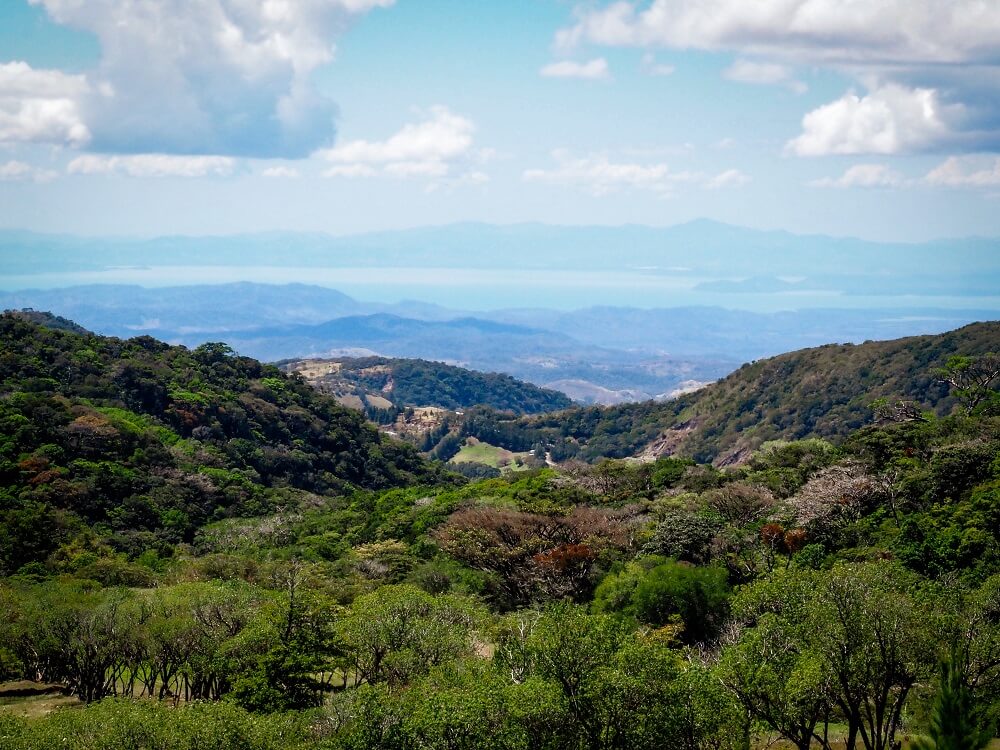
Costa Rica Travel Guide – Read This Before Your Visit
If you’re looking for answers to common questions such as safety, cost, what to eat and how to travel across the country then make sure to check out my detailed blog post below.
The blog post includes answers to the following questions:
- Is Costa Rica Safe?
- Is Costa Rica Expensive?
- Do You Need to Speak Spanish in Costa Rica?
- Health Related Travel Tips
- Best Ways to Move Around Costa Rica

How to Get to Monteverde / Santa Elena
By Car – For the greatest flexibility, you can always hire a car for the duration of your stay in Costa Rica. If you arrive to San Jose airport, then you can always pick up your vehicle from there and reach Santa Elena in about 3 hours. The road to Santa Elena from San Jose is good, however, you might want to consider hiring a better car that can easily travel across some of the bumpier roads in the area. You don’t need a 4×4 though.
By Bus – If you’re on a tighter budget, then you can always take a local bus to Santa Elena from San Jose. You can book your bus on the Transmonteverde website. The bus only goes twice a day at 6:30AM and at 2:30PM. It takes around 5.5hrs and costs around 3,700 Colones or 7USD. Note that there’s no toilet on the bus. However, it stops about halfway through so you can use the facilities and also purchase food and drinks.
Where to Stay? Monteverde or Santa Elena?
There are many hotels, hostels and even campsites you can choose from in the area.
I personally recommend staying in Santa Elena, since the town has a lot more amenities than Monte Verde itself. You’ll be able to find accommodations for different budgets in Santa Elena and many restaurants and supermarkets too. Santa Elena is also where most of the tour operators are based. In addition, the town provides you with easy and walkable access to many of the attractions you don’t want to miss out on.
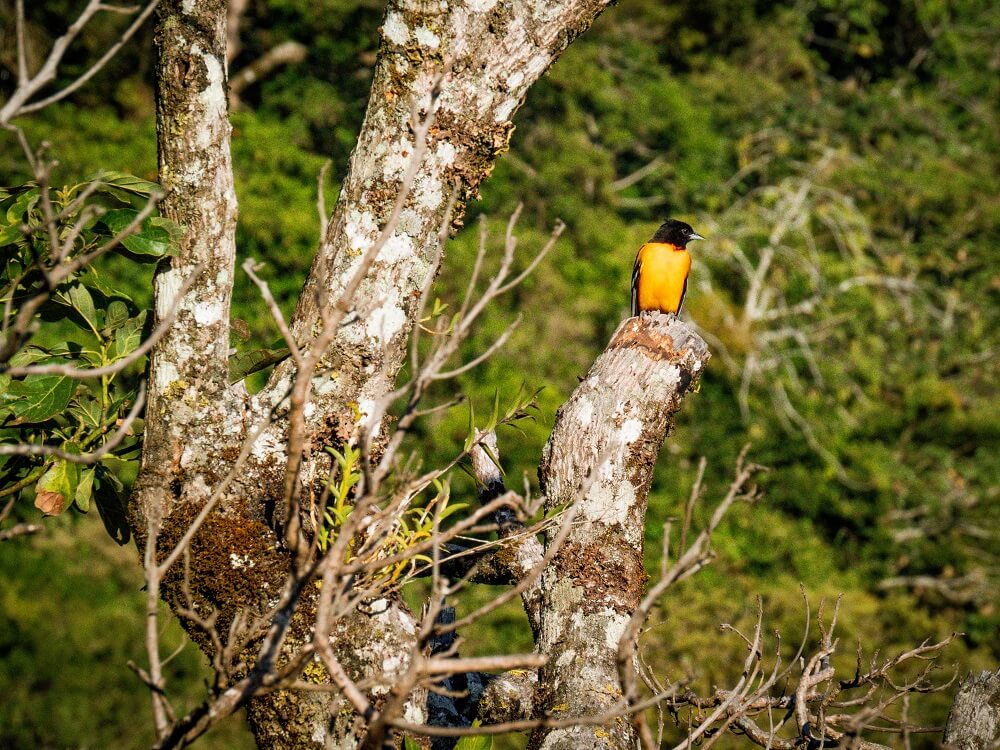
Best Time to Visit Monteverde / Santa Elena in Costa Rica
Monteverde is definitely an all-year-round place to visit. For example, the temperatures barely vary during the year. However, there are more humid months and less humid months you could consider with the least humid being February and the most humid being October.
The drier months are normally from December to April, although it doesn’t mean that it won’t rain during this time. Since Monteverde is over 1,400m above sea level, expect the temperatures to be cooler than along the coast, so prepare accordingly.
Most tourists will visit Monteverde between January and March. Possibly the least visited month by tourists is September. For reference we visited in February and we had great weather conditions meaning that it wasn’t too cold, humid or rainy.
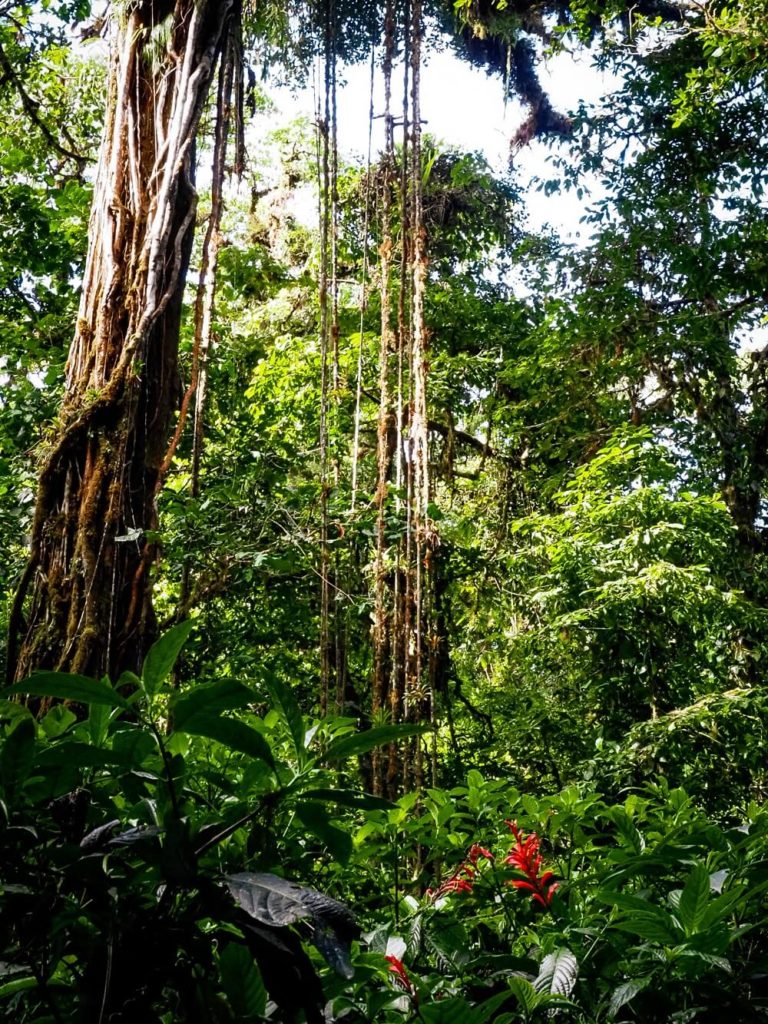
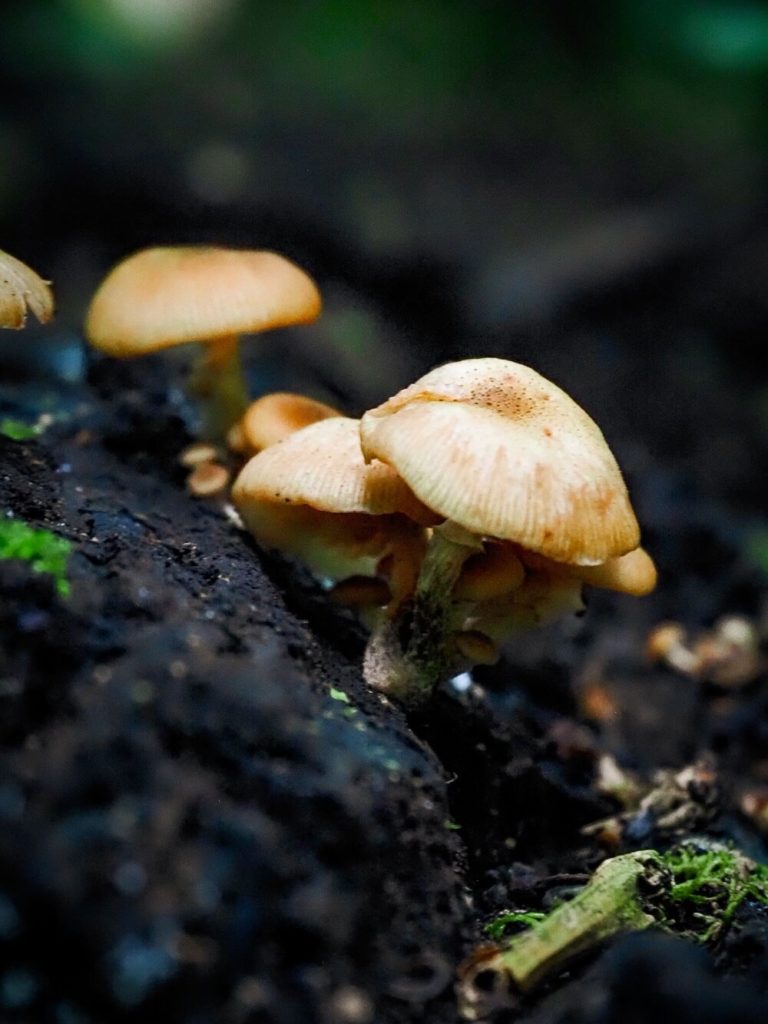
10 Best Things to do in Monteverde / Santa Elena in Costa Rica
1. Visit Monteverde Cloud Forest Biological Reserve
Without doubt, Monteverde Cloud Forest Reserve is the No.1 attraction in this area of Costa Rica.
Run by the Tropical Science Centre, the reserve covers an area of 10,500 hectares and is home to over 3,200 species of plants, 120 species of mammals, 425 species of birds, 120 amphibian and reptilian species and of course thousands of insects. Apparently, about 50% of Costa Rica’s biodiversity may be found within this area.
You can enjoy the cloud forest through 11 different hiking trails ranging from 0.3km up to 1.3km in length. There are many viewpoints along these trails and other features such as a waterfall and a hanging bridge. For the best view head to the ‘La Ventana’ (the window) viewpoint, where you can see the Continental Divide. It is a line that divides the continent into the Pacific and the Caribbean sides.
Top Tip – After your visit, don’t forget to grab some fresh tropical juice at Colibri Café where you can enjoy watching hundreds of hummingbirds. (Their cinnamon bun was the best one I’ve ever had!)
Entry Fee – 25USD for adults and 12USD for children between the ages of 6 and 12. If you have a valid student card you can also enter the site for 12USD. Additional fee for guided tour.
Opening Hours – Every day between 7AM and 4PM.
Top Saving Tip – Take the Ruta 625 Monteverde – Puntarenas local bus to the reserve from in front of Banco Nacional in Santa Elena. It only costs 1USD.

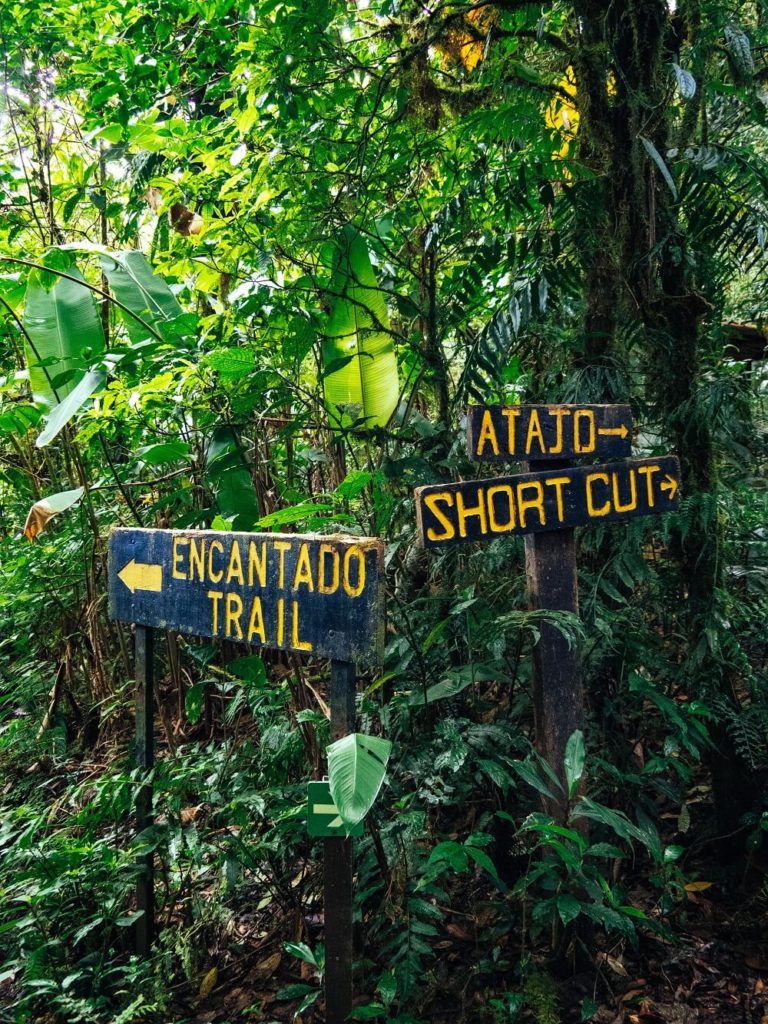
2. Hike in Santa Elena Cloud Forest Reserve
Whilst many visitors’ first choice is Monteverde Cloud Forest Reserve, there are actually other reserves you can visit in the area. Santa Elena Cloud Forest Reserve is one of them. It protects about 765 acres of cloud forest, and it’s directly controlled by the local community.
You can explore the reserve via 5 trails covering about 12.5km. These trails are much longer than the ones in Monteverde and also much narrower. If you’re a big hiker, then you’ll really enjoy hiking through these narrow paths in the dense jungle.
Santa Elena’s best feature is hands down the observation tower, from where you can get a 360-degree view of the area and of Arenal Volcano.
If you’d like a quieter and also more affordable experience, then don’t skip visiting Santa Elena Cloud Forest Reserve.
Entry Fee – 16USD for adults and 7USD for children between the ages of 6 and 12. If you have a valid student card you can also enter the site for 9USD. Additional fee for guided tour.
Opening Hours – Every day between 7AM and 3PM.
No time to visit both? Click here to see which cloud forest reserve is best for you to visit: Monteverde or Santa Elena?
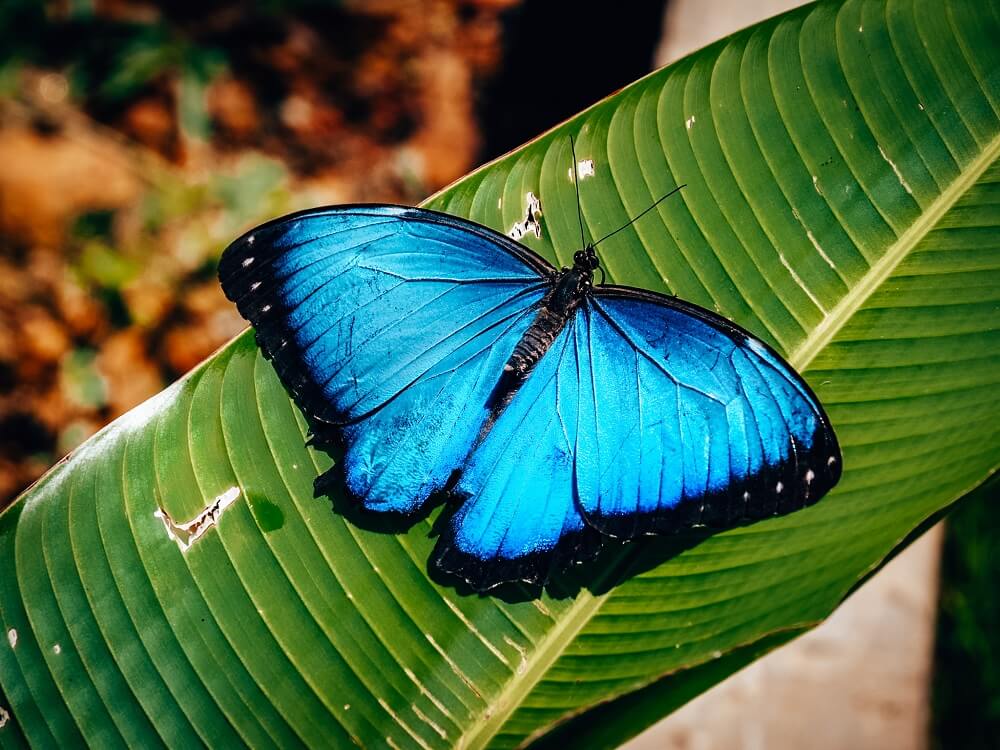
3. Learn About Butterflies and Insects at Monteverde Butterfly Gardens
Just outside of Santa Elena is where you can find Monteverde Butterfly Gardens. The garden is home to over 30 butterfly species housed within four different habitats. I was pleasantly surprised by just how much we’ve enjoyed seeing and learning more about butterflies. The entry fee includes a guide who will walk you through the life cycle of a butterfly. Seeing all these colourful butterflies flying around you – especially the Blue Morpho – and many times landing on you in this lush green garden was absolutely fantastic. We even got to release some butterflies that just reached their adult life stage that morning into the right habitat.
As part of the tour you’ll also have the chance to learn more about and get up close and personal with insects and arachnids. Trust me, this knowledge will come in handy when you find some creatures (a scorpion for example) hiding under your backpack at your accommodation. (Lesson learnt: Never try to pack your backpack in the dark and always shake your clothes and check your shoes before putting them on when you’re in Costa Rica.)
Entry Fee – 15USD including guided tour.
Opening Hours – Every day between 9AM and 3PM.
Top Saving Tip – If you’re staying in Santa Elena, then you can easily reach the Butterfly Gardens on foot. It only takes about 30 minutes to get there from the centre, but it’ll save you some pennies on taxi fares.
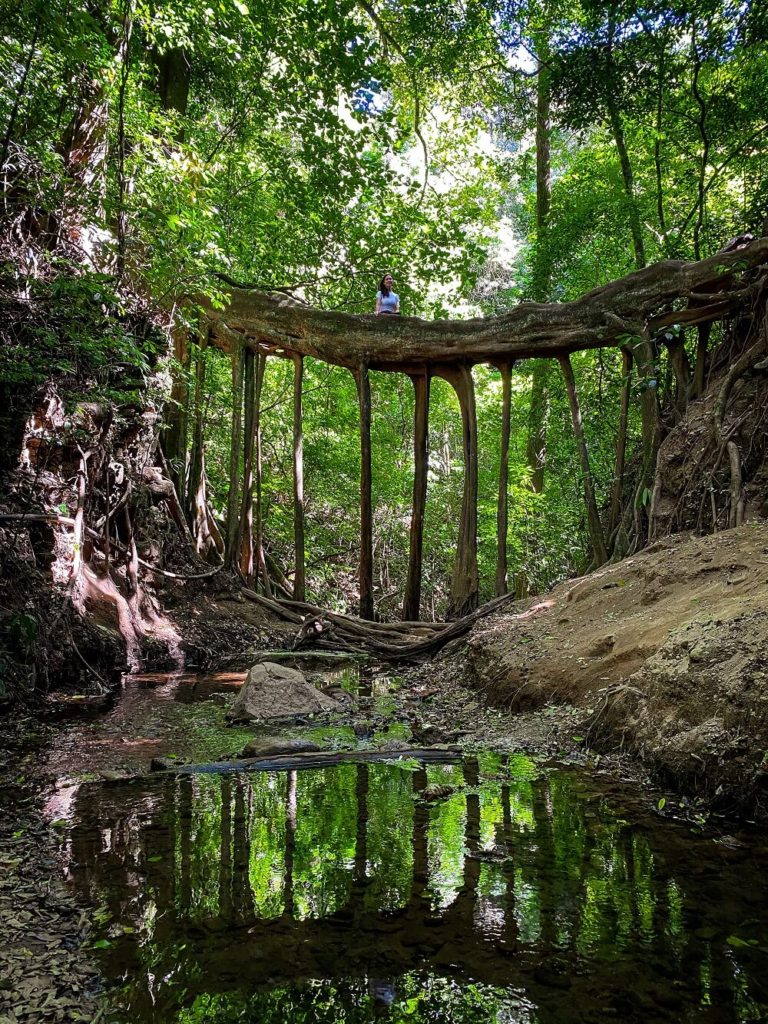
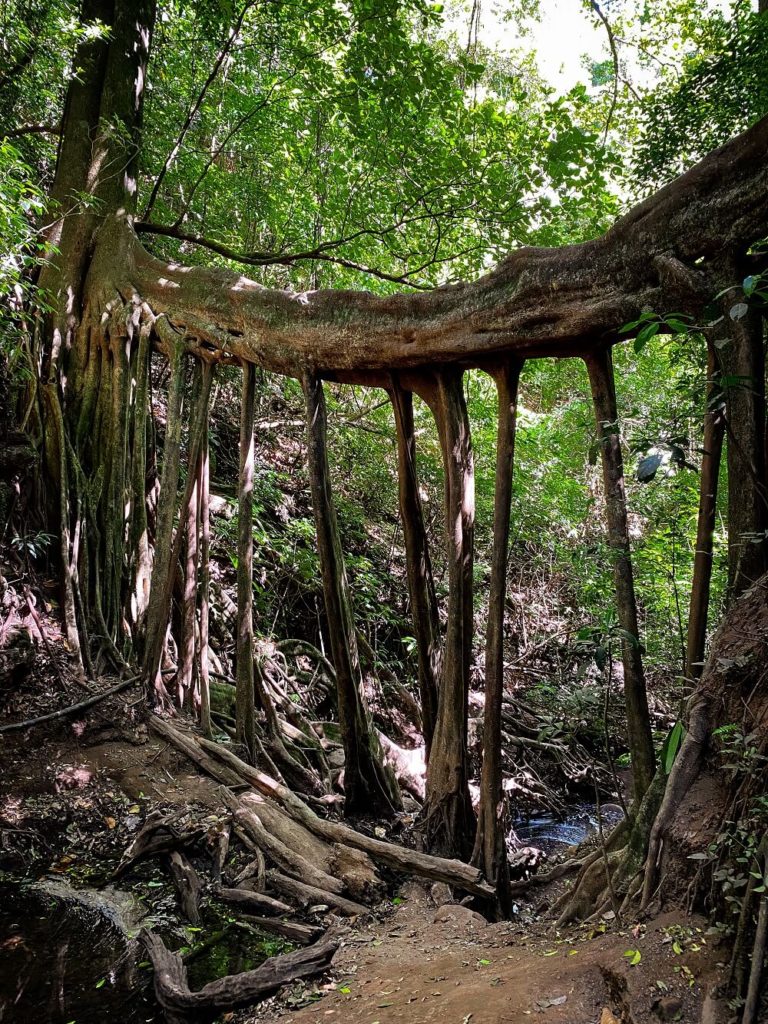
4. Take a Short Hike to Ficus la Raiz
If you’re looking for a great activity in Santa Elena, then check out Ficus la Raiz. Located only a short hike away from Santa Elena town centre, Ficus la Raiz is basically a root bridge. The bridge is made up of the roots of a ficus tree and you can actually climb on top of it.
Note – The hike down to it might be a bit slippery, so make sure to wear sensible shoes. Also, be careful when climbing on top of the bridge as it’s quite high above the ground.
Entry Fee – It was free at the time we visited in February 2022, although the owner has been doing some work to improve access so they might charge you a small fee.
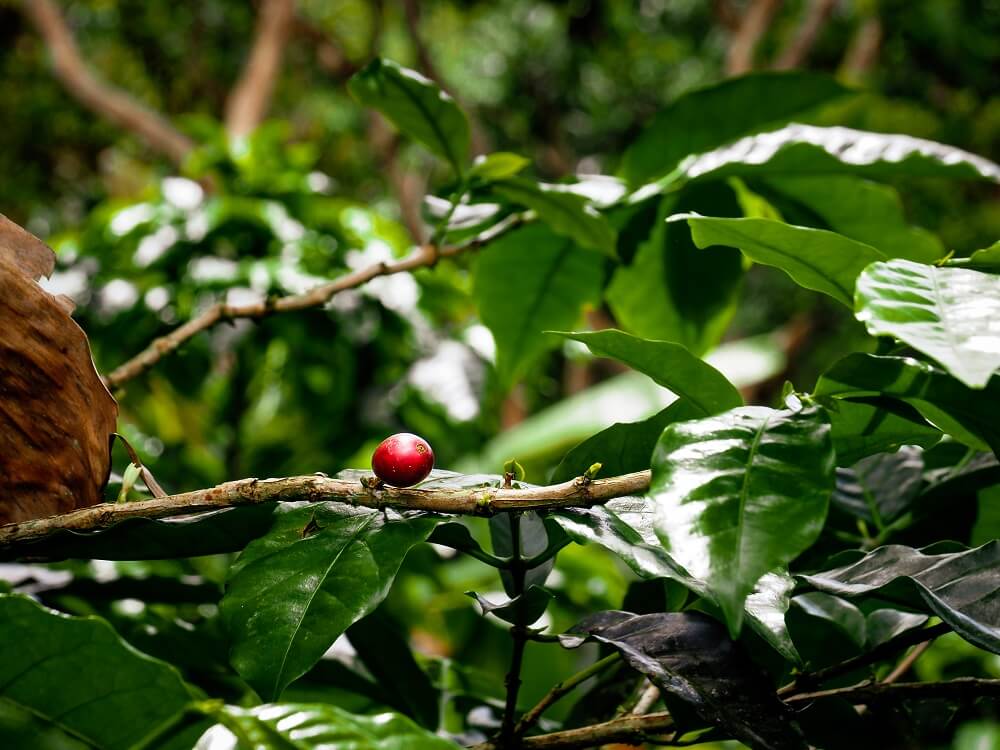
5. Learn About Coffee on a Coffee Tour
If you enjoy drinking coffee and you want to sample the best quality coffee, then you must join a coffee tour when you visit Monteverde.
Costa Rica produces about 197 million pounds of coffee annually. This means that the country isn’t the largest producer in the world, however, it is well-known for its Arabica coffee. Arabica beans are actually a lot harder to grow than the lower quality Robusta beans. These coffee beans need very specific conditions such as higher altitude and milder temperatures. Costa Rica benefits from mountainous areas with warmer temperatures which creates the perfect environment for the Arabica beans.
Did you know? – In Costa Rica a law was passed that prohibited the plantation of low-quality coffee beans in 1989. This means that Costa Rica only produces 100% Arabica coffee which is the highest quality coffee beans.
Based on what the tour guide said and my own research, apparently a few years ago there were plans to start planting Robusta beans. Due to climate change, the conditions for growing Arabica can be seriously impacted whereas Robusta seems to be a bit more resilient. Robusta also grows twice as fast as Arabica, so it’s more economically beneficial for producers. However, based on my internet search the ban on Robusta cultivation was upheld.
By joining a coffee tour, you will have the chance to learn about the exact process used to make your delicious morning cuppa.
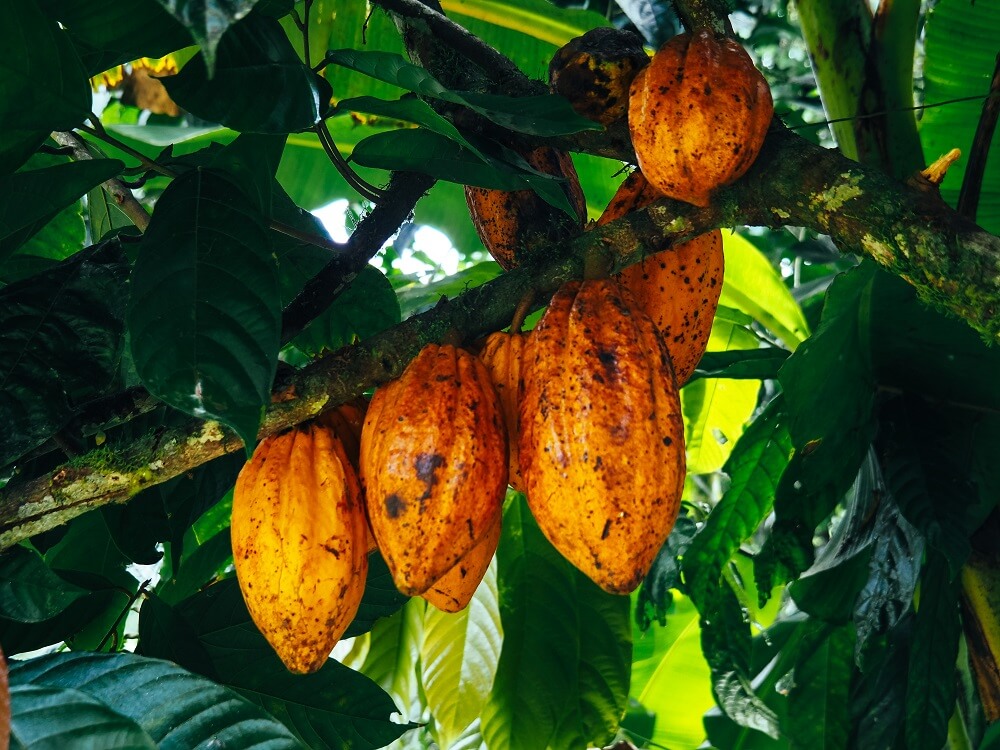
6. Learn How Chocolate is Made on a Chocolate Tour
If you love chocolate then you should definitely go on a chocolate tour when in Costa Rica.
Cacao actually used to be the leading export product in Costa Rica until coffee and bananas took over. There are actually many other provinces in Costa Rica that grow cacao trees such as Cartago, Alajuela, Guanacaste and Talamanca.
Did you know? – A fungus called monilia wiped out at least 80% of the cacao trees in the country in the late 1970s. In the 1980s, Dr. Phillips-Mora started his project to find the most tolerant cacao trees. Much later, in 2006, he released the first batch of hybrid cacao varieties which were much more disease resistant.
During the chocolate tour your guide will walk you through the process from getting the cacao beans to turning them into delicious chocolate for you to try.
Top Saving Tip – Instead of booking three different activities, why not combine them all in just one tour. It’ll save you both time and money. At Don Juan, you can complete a Coffee-Chocolate-Sugar Farm Tour for 22USD per person.
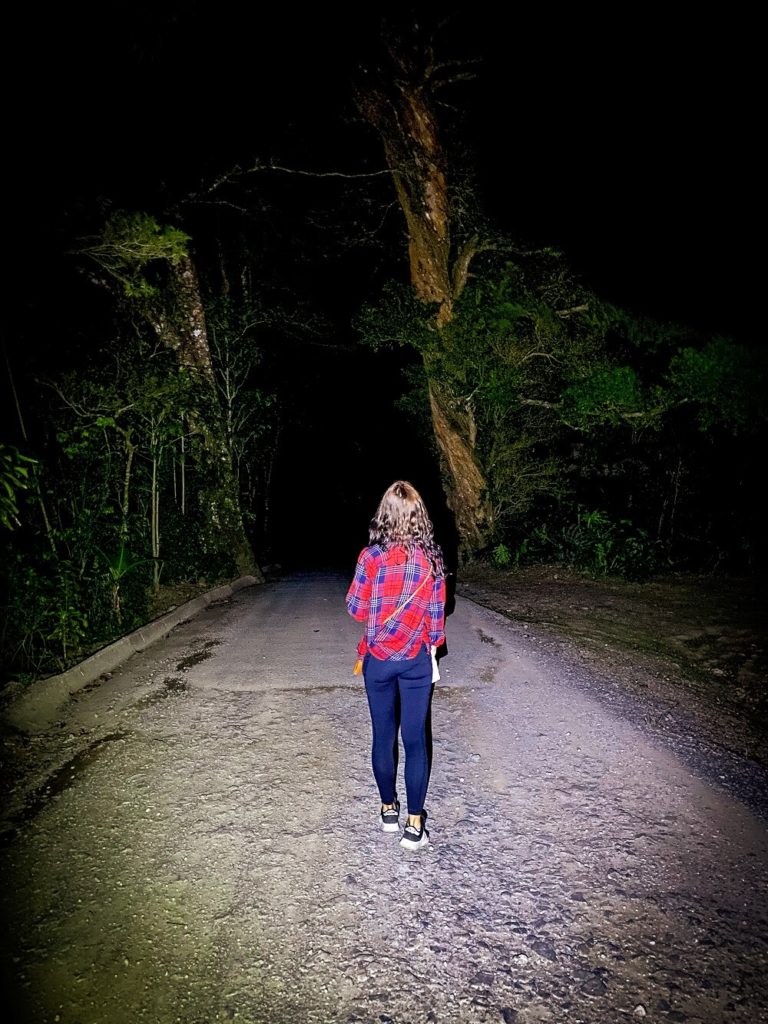

7. Join a Night Walk to See More of Costa Rica’s Wildlife
As the sun sets, the night creatures will begin to emerge. So, if you’d like to have the chance to explore the jungle at night and see more of Costa Rica’s amazing wildlife, then make sure to join a night walk. A guide will give you a torch and will lead the walk through the dark paths of the forest. With experienced eyes our guide spotted and identified different species in the cloud forest. It was actually very impressive to see how they spotted the tiniest creatures in the dark.
Note – Every night walk will be different and you may or may not spot any wildlife. We actually didn’t see anything crazy like a snake or the famous red-eyed tree frog. However, we still managed to see many insects, tiny frogs, geckos and spiders. At the end of our tour we even spotted an armadillo, which was definitely the highlight of our night walk.
It was our very first time walking in the jungle at night, so it definitely felt a little strange and creepy at first. Although later on during our backpacking trip we hiked in the Amazon Rainforest at night too which was definitely a more intense experience.
Top Saving Tip – Instead of booking three different activities, why not combine them all in just one tour. It’ll save you both time and money. At Don Juan, you can complete a Coffee-Chocolate-Night Tour for 42USD per person.
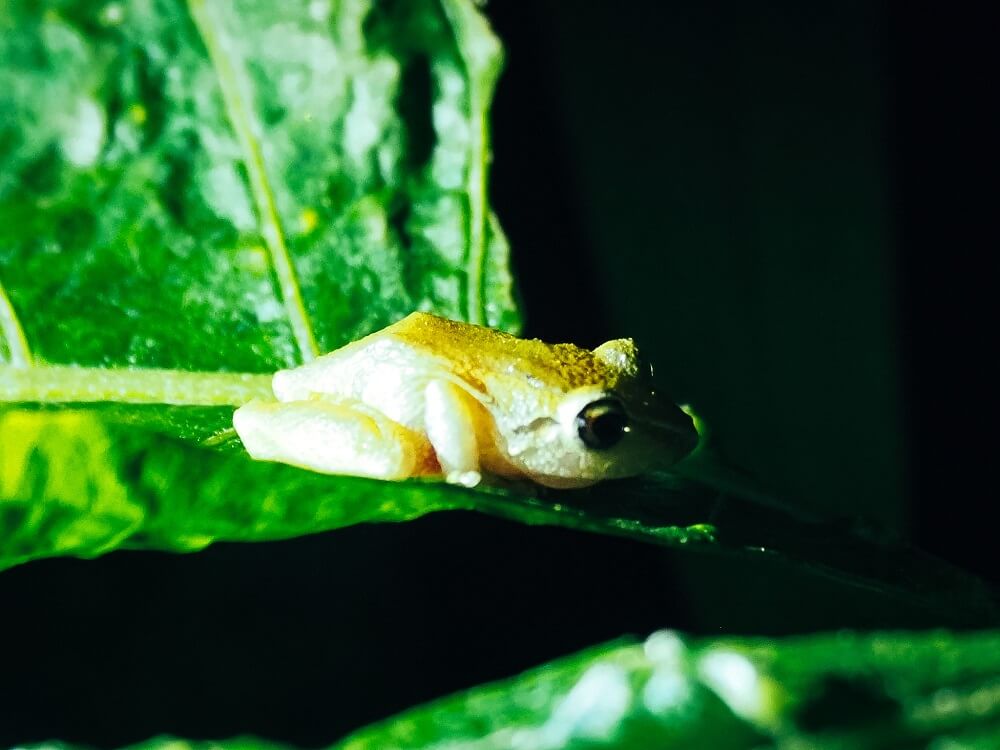
8. Visit The Frog Pond, The Bat Jungle, or The Orchid Garden
If you couldn’t spot any exotic frogs during your night walk tour, then you can always visit The Frog Pond in Santa Elena. You can find around 25 different species of frogs, including the iconic Costa Rican red-eyed tree frog.
With your ticket you can visit both during the day or at night. Bear in mind that the frogs will be more active and vocal at night, so time your visit accordingly.
Frog Pond Entry Fee – 12USD per person.
Opening Hours – Every day between 9AM and 8:30PM.
Operated by a well-known bat biologist, you can witness 8 different species of bats fly, eat and socialize right in front of you when you visit the Bat Jungle.
Bat Jungle Entry Fee – 13USD per person.
Opening Hours – Every day between 9AM and 6PM.
If you love orchids, then don’t miss visiting the Orchid Garden in Santa Elena. During your visit you can see more than 425 different species of orchids, including the world’s smallest. These rare orchids normally live in the canopy and are therefore nearly impossible to spot when walking in the forest.
Orchid Garden Entry Fee – 10USD per person.
Opening Hours – Every day between 9AM and 5PM.
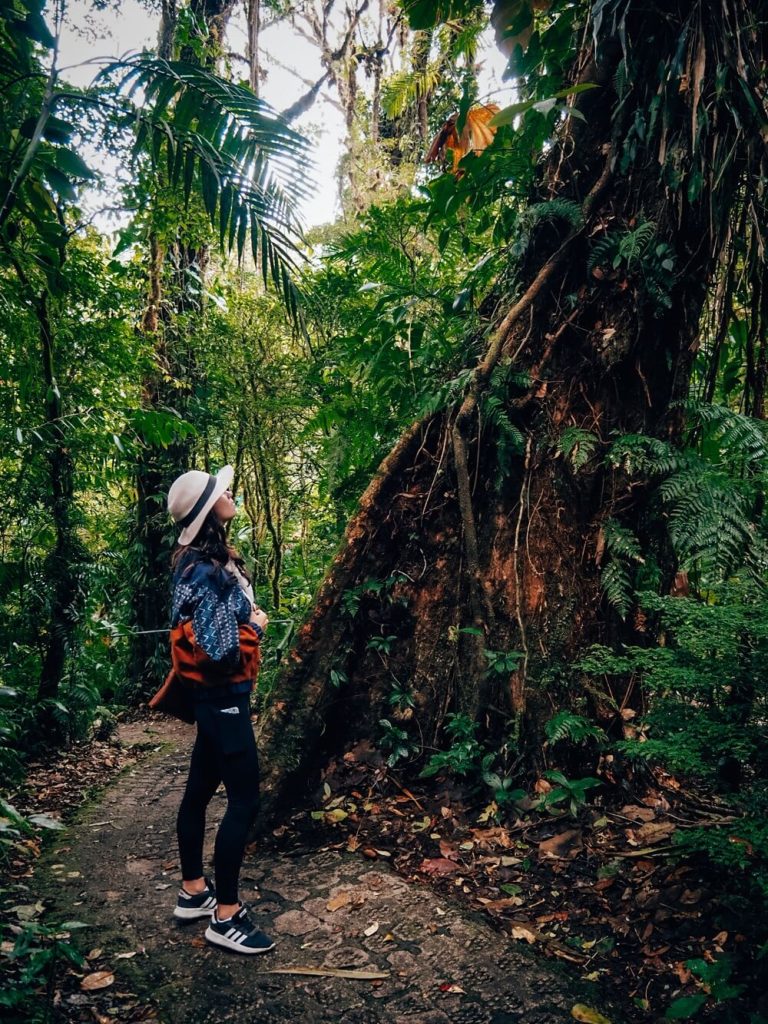
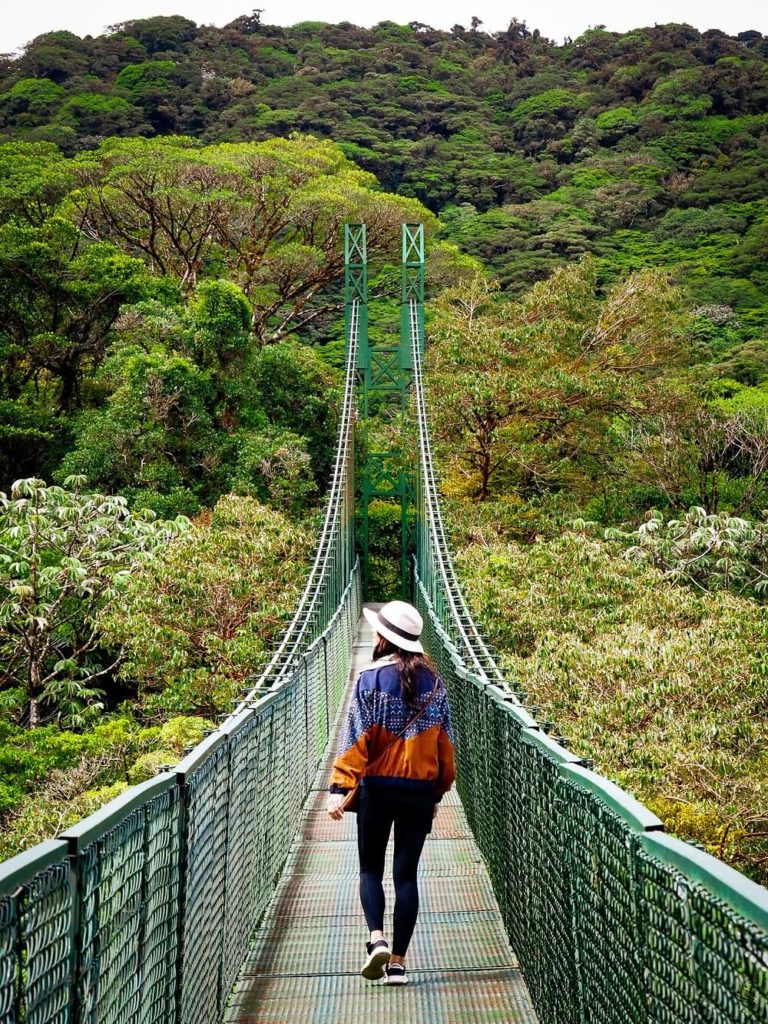
9. Enjoy the Treetop Walkway at Selvatura Adventure Park
If you’d like to enjoy the cloud forests from a different point of view, then definitely head to Selvatura Adventure Park.
Since the only hanging bridge in Monteverde Cloud Forest was closed during our visit, we knew that we couldn’t leave Monteverde without enjoying the cloud forest canopy. Luckily, Selvatura Adventure Park offers a 3km (1.9 mile) hiking trail that snakes through the cloud forest and includes the crossing of eight hanging bridges.
The length of the hanging bridges ranges from 170ft up to 560ft and they really allow you to enjoy the cloud forests from up high. This trail also gives you the chance to spot some wildlife you wouldn’t see from the ground.
Note – The trail can get a bit crowded at the hanging bridges where many people want to snap some photos, so be patient and arrive early.
Hanging Bridges Trail Cost – 39USD for self-guided tour. You can pay an additional fee for a guided tour.
How to get to Selvatura Adventure Park? – When you book your adventure, you can request a free shuttle which will get you to the park. You can also return to Santa Elena with this service.
The park offers a lot more adventures and packages so make sure to check out their website to find the most suitable one.
10. Go on an Adrenaline Rushing Zipline Adventure at SkyAdventures
Last but not least, if you enjoy adrenaline pumping activities, then you have to go on a ziplining adventure when visiting Monteverde. There are many other extreme sports you can try out whilst you’re visiting Monteverde. However, since recreational zip lining was indeed invented in Costa Rica, if you do one extreme sport, then it has to be zip lining.
History of ziplining – While ziplining dates back to many centuries ago in China and Australia, recreational ziplining started with a wildlife biologist, Donald Perry. He originally used his new method to be able to study the Costa Rican flora and fauna. It later led to the invention of the adrenaline pumping recreational activity of ziplining.
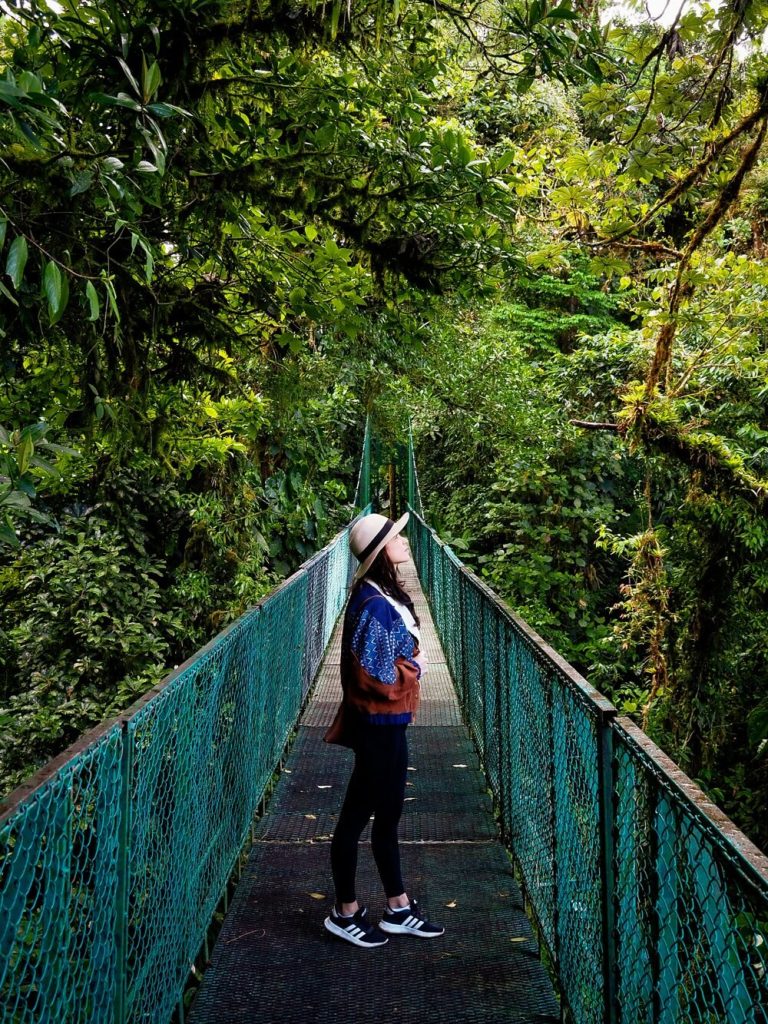
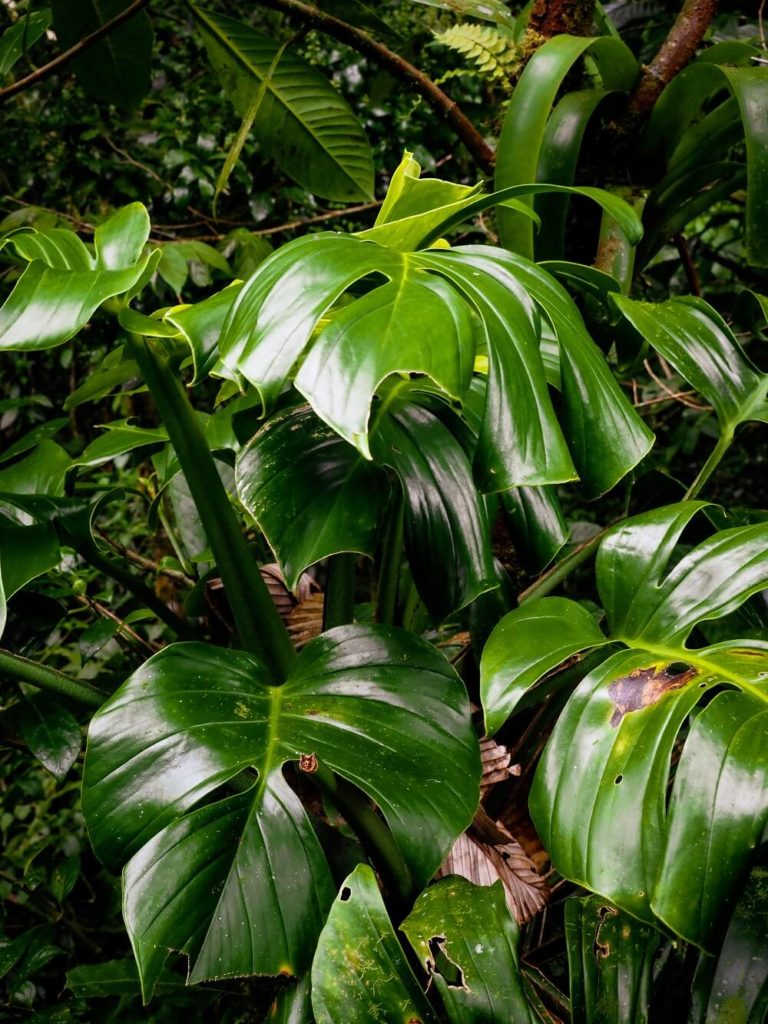
Final Thoughts on the Best Things to Do in Monteverde / Santa Elena
As soon as we set foot in Santa Elena, I instantly fell in love with this area. Enjoying the clean, crisp and fresh air, being surrounded by the lush green cloud forests, and hearing the sound of wildlife everywhere definitely made me feel more peaceful than I’ve ever been before. Although Costa Rica is an expensive country, we’re so grateful that we had the chance to see this incredible place. Whilst we visited some other areas during our 3-weeks in the country, I can confidently say that Monteverde became my absolute favourite one.
Have you ever been to Monteverde or Santa Elena before? If so, how much of the area did you manage to explore? Let me know in the comments below.
Now, let your adventure begin,

Our Top Travel Resources
Accommodation: For hotels we always use Booking.com and Hostelworld for hostels. We also book longer stays on Airbnb or Vrbo.
Flights: To find the best flight prices we always check Skyscanner, Google Flights or WayAway. Then we also check the airlines’ websites too for comparison.
Car Rentals: We use Discover Cars when we want to rent a car as it compares local, national and international companies.
Activities: If we book organised tours we always check either GetYourGuide or Viator.
Foreign Currency: Whenever we can we prefer to pay in local currency and for that we always use our Wise card. We can easily withdraw money from the ATM or pay by card at most shops and restaurants.
Travel Insurance: We never go anywhere without travel insurance. You never know what will happen on your trip, so good travel insurance like SafetyWing can protect you in case of injury, illness, theft and cancellations.
eSIM and VPN: To get data abroad we use Airalo which is an app that allows you to download a prepaid eSIM to your phone in over 190 countries. Make sure to have a VPN to avoid hackers accessing your personal data when using public WIFI. We use Surfshark which is the only VPN that offers one account on unlimited devices.
Remember…It all starts with a Pin…
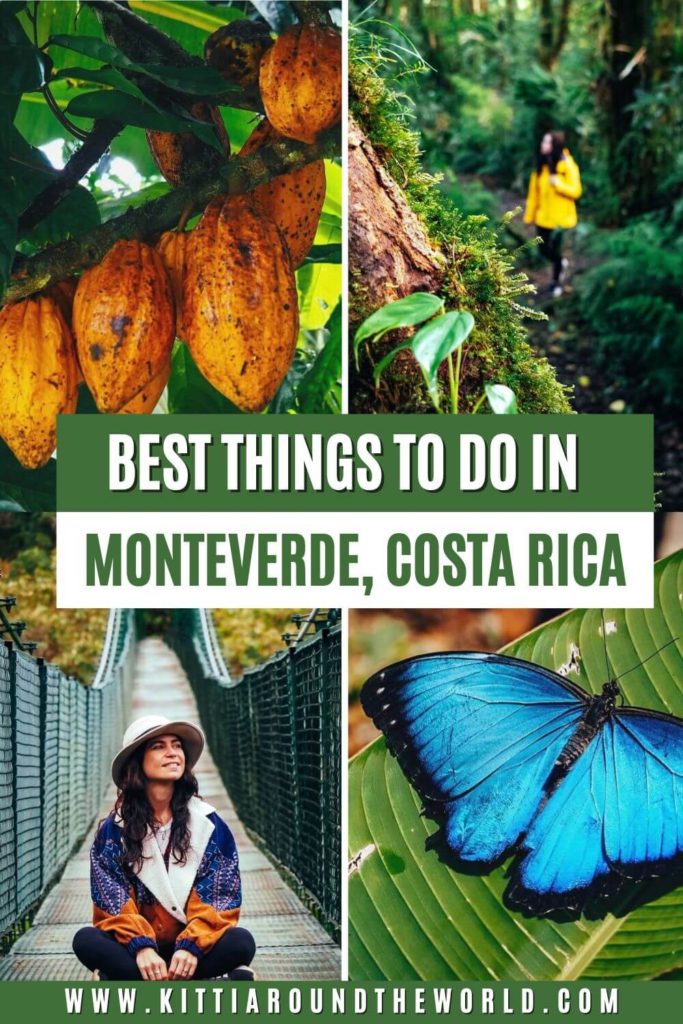
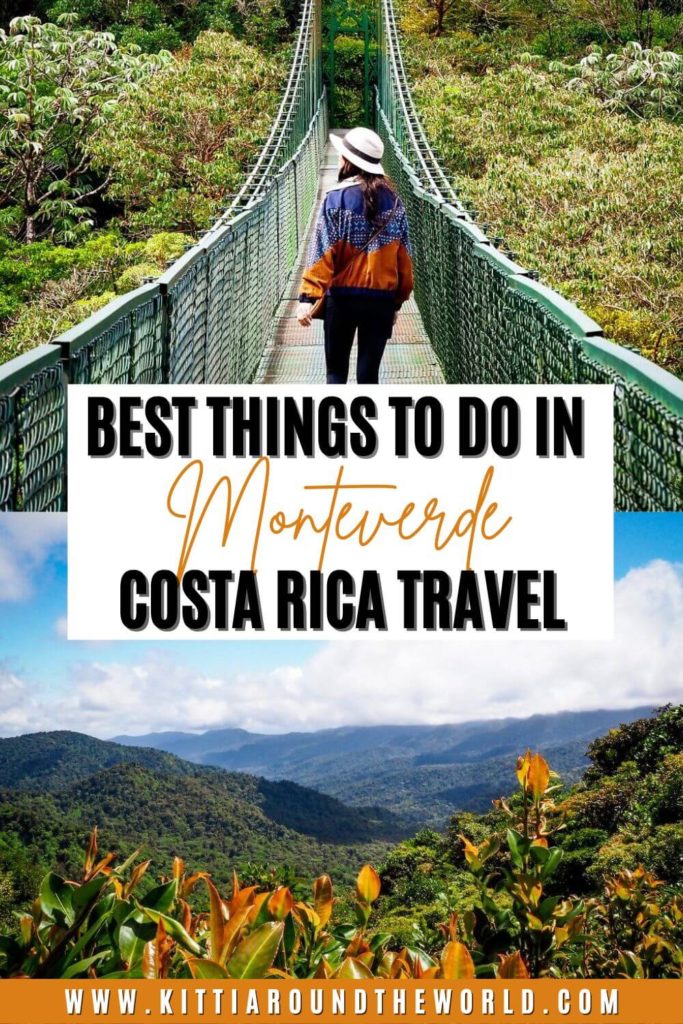

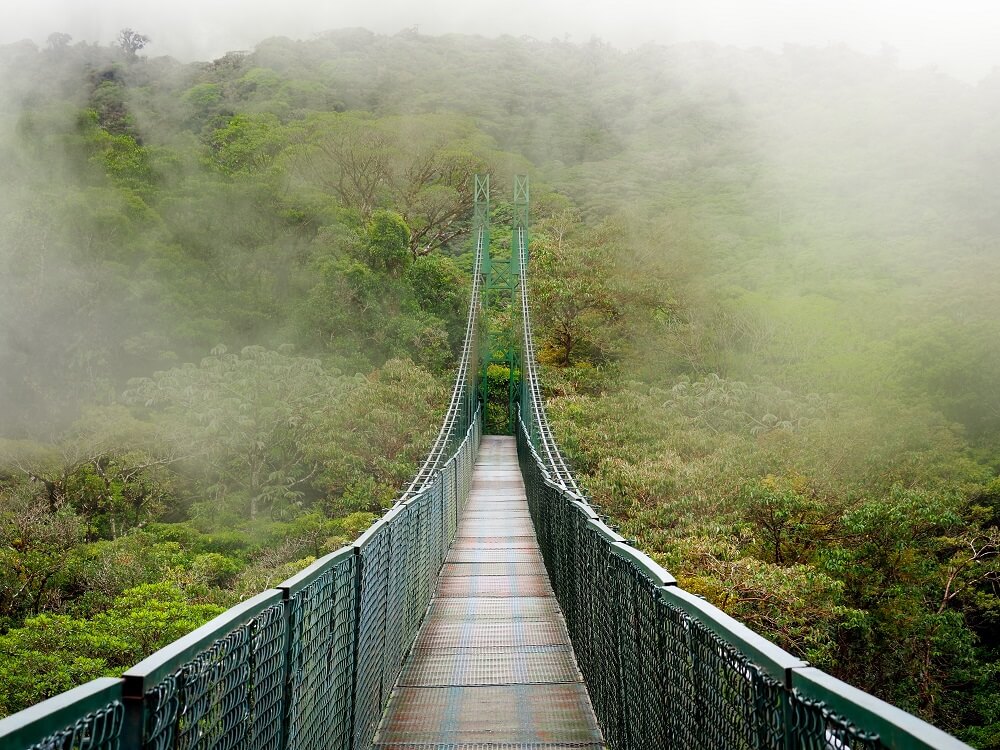
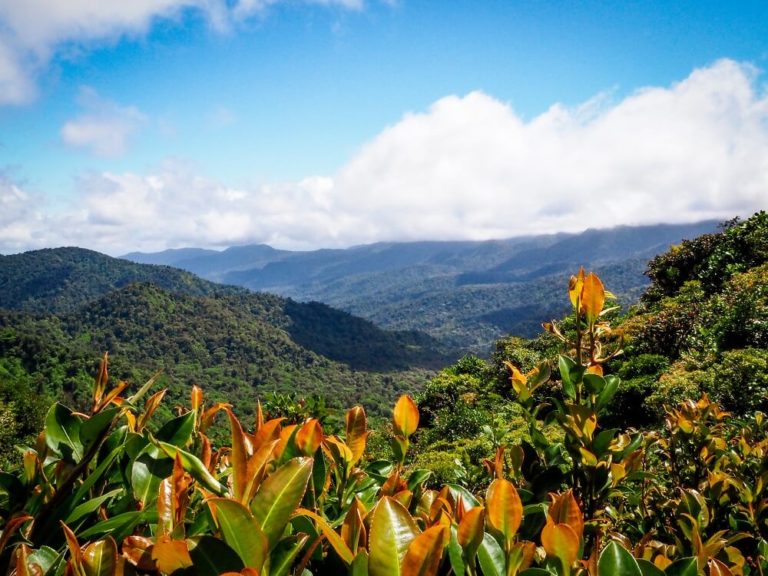
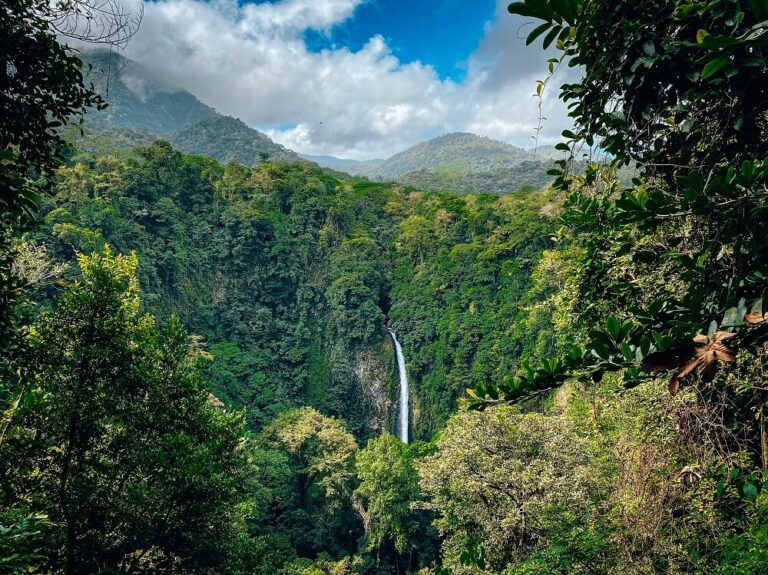
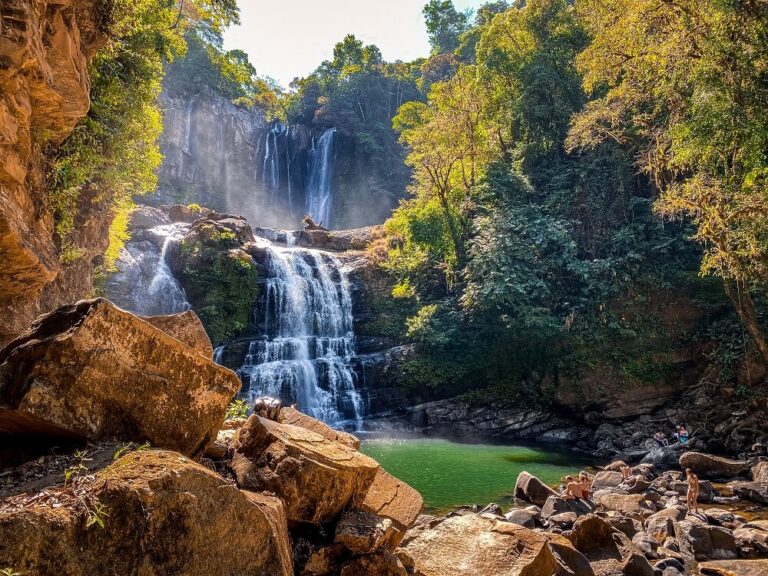
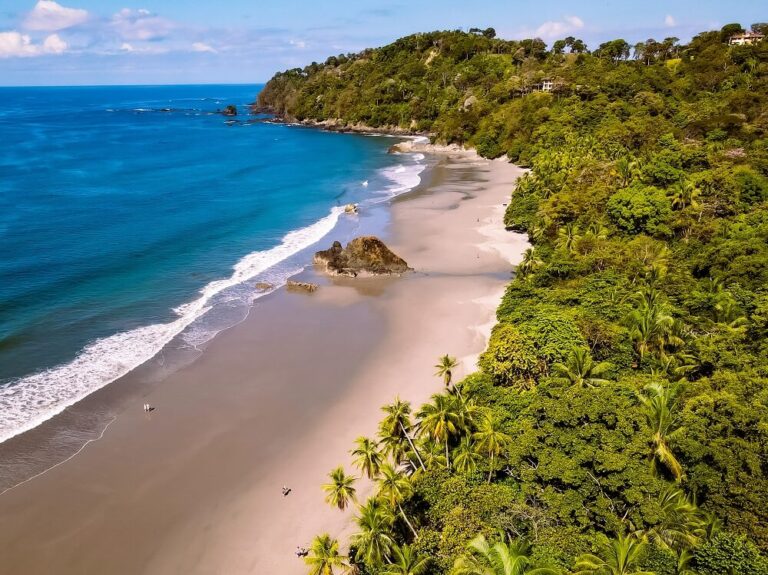
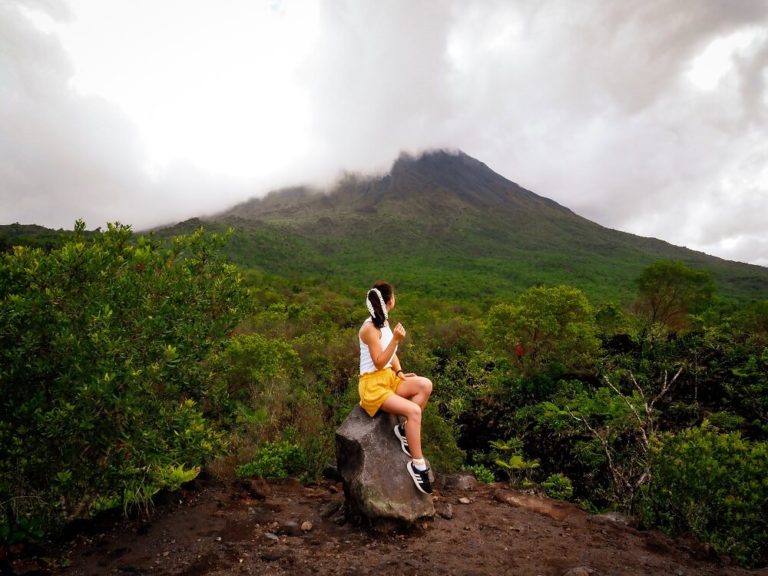
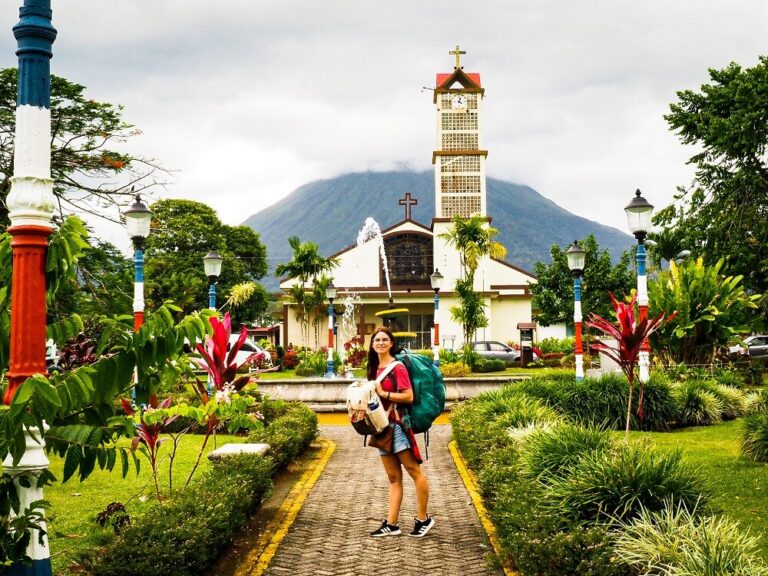
A fabulous blog!👍 So much to see and do here and you cover it all! Very detailed info about different parks, travel and activities. It all looks so beautiful 😍 Hope I get to see it for myself sometime. x
Thank you Karan, I’m happy you found my blog post useful. I’m sure you’d love your visit to Monteverde and Costa Rica too, it’s such a beautiful area and country.